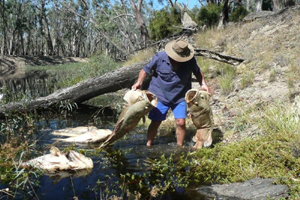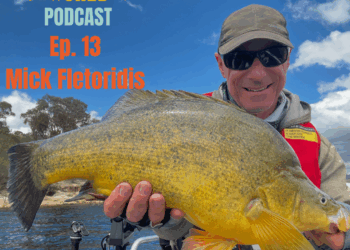A jointly funded project to help fish migrate and spawn in the Edward-Wakool river system in south western NSW is under way.
The $500,000 three-year project funded by Industry & Investment NSW and Murray Catchment Management Authority, aims to improve delivery of water flows for fish in the rivers.
Narrandera Fisheries Centre research scientist Dr Lee Baumgartner said the innovative project would assist scientists and fisheries managers to locate important refuge sites where fish survive when flows are reduced.
This would help prevent fish kill events and improve the situation for native fish throughout the system, Baumgartner said.
The catalyst for the research can be traced back to a massive fish kill in the river system early last year when hundreds of fish, including giant Murray cod, died following the release of domestic and stock water in the Wakool system. See story here.
The NSW Department of Water and Energy acknowledged the fish kills occurred after it released water into Colligen and Merran creeks, west of Deniliquin.
Dr Baumgartner said electrofishing and acoustic tracking were being used to track the movements of individual fish during the next two years to determine how fish respond to increased flows. Earlier this year, more than 40 sites were electrofished to determine the status of fish communities before flows are increased.
“Samples were dominated by Murray cod, golden perch and many species of small fish such as native carp, gudgeons, smelt and rainbow fish,” he said.
The next phase of the project will see the installation of 28 listening stations in Yallakool Creek and Wakool River to investigate fish movement patterns. More than 80 fish will be tagged with acoustic tags, including Murray cod, golden perch, silver perch and carp. The tags emit sound waves that identify individual fish, for tracking purposes.
Dr Baumgartner says, “After fish are tagged, water flows will be delivered into the Wakool River and researchers will regularly download data from the listening stations to search for records of tagged fish.”
Researchers are asking anglers who come across a listening station not to disturb it, as each receiver has been specifically placed to collect important data.
Senior fisheries technician Ian Wooden said the acoustic tags will be surgically implanted into each fish’s gut cavity, but for identification purposes an external tag is inserted. Anglers finding tagged fish are asked to release them and call Narrandera Fisheries Centre on (02) 6958 8200.




















